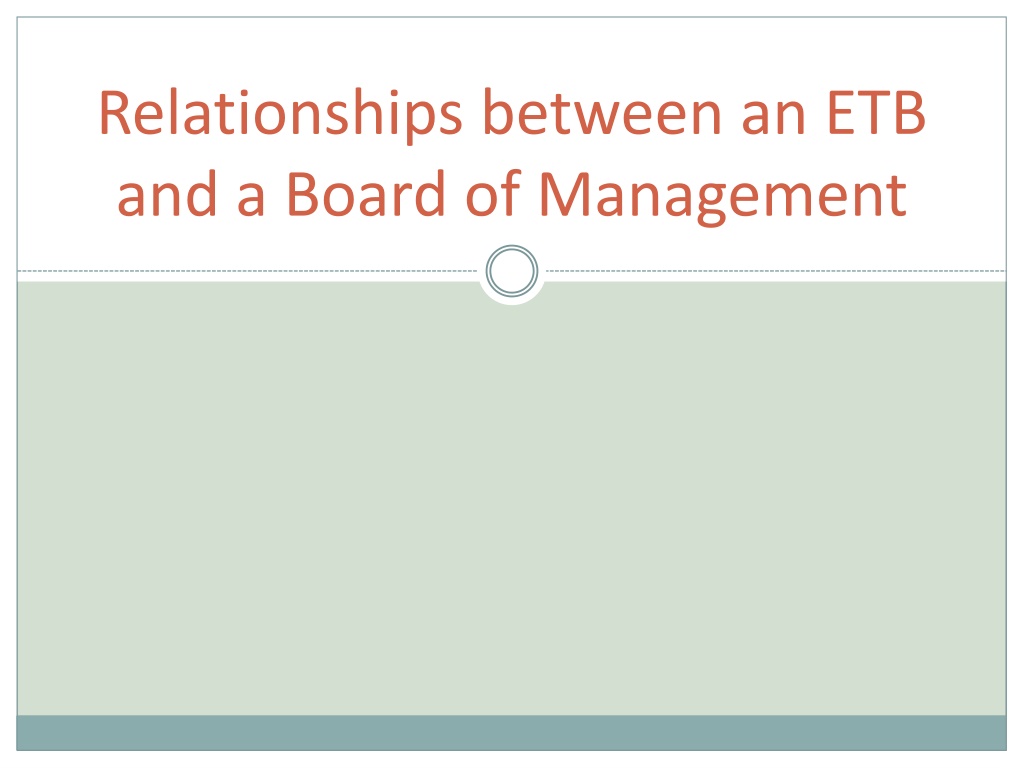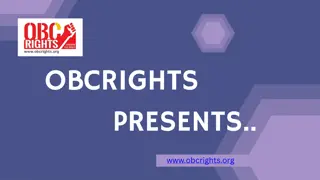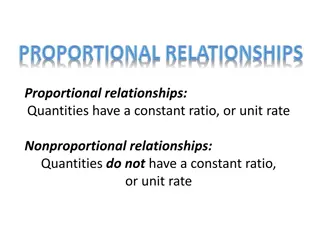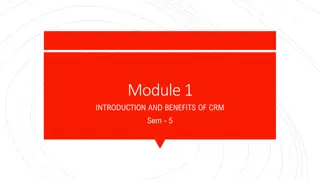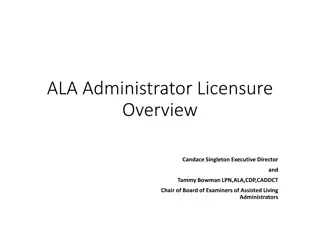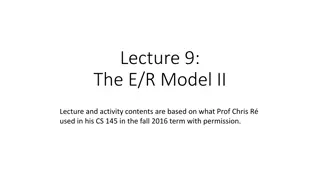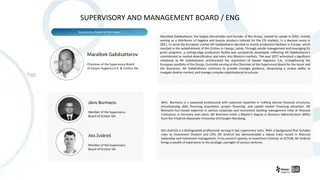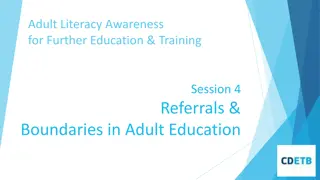Overview of Relationships Between an ETB and Board of Management
This content delves into the dynamic relationships between an Education and Training Board (ETB) and the Board of Management, highlighting the functions, provisions, opportunities, and challenges faced by ETBs in transforming education and training services. It also discusses corporate governance principles, effective implementation of legislation, and the governance role of Boards in schools. The content emphasizes the importance of leadership, accountability, and integrity in governance and management within the educational sector.
Download Presentation

Please find below an Image/Link to download the presentation.
The content on the website is provided AS IS for your information and personal use only. It may not be sold, licensed, or shared on other websites without obtaining consent from the author. Download presentation by click this link. If you encounter any issues during the download, it is possible that the publisher has removed the file from their server.
E N D
Presentation Transcript
Relationships between an ETB and a Board of Management
NEW DEPARTURE Opportunity/Challenge Each of the 16 ETBs to transform the education, training and youth work services within their expanded remit
REMIT OF ETBs Provisions of Education and Training Boards Act, 2013 A. For example Section 10 Functions of Education and Training Boards Section 44(i) Appointment of Committees (Board of Management ) of each recognised School Education Act 1998 S.14 - Appointment of Board of Management of each School S.8(4) Patron in case of School established or maintained by ETB Adoption/confirmation of draft policy/ices of each Board of Management e.g. Attendance and participation policy S.15(2)(d) Education (Welfare) Act, 2000 - Code of Behaviour (S. 23) B.
OPPORTUNITIES FOR 16 ETBs Effective Implementation of the functions/measures provided for in the legislation Making the vision happen in reality Section 10 Functions of ETB Act, 2013 relating to recognised Schools (primary and second level) Centres for Education Education and Training Facilities Further Education and Training Act, 2013 Further Education and Training Strategy, 2014-2019
OPPORTUNITIES/CHALLENGES FOR ETBs Lead and manage enhanced remit and functions 13 ETBs resulting from consolidation Effective discharge of remit including training over expanded geographical area
CORPORATE GOVERNANCE Complying with the Code of Practice for the Governance of Education and Training Boards as issued by the Department of Education and Skills with Circular Letter No. 0018/2015 Application of Corporate Governance Principles to each and every education and training service
GOVERNANCE FOR A SECOND LEVEL SCHOOL Primary role of each Board of Management/Board of Governance is one of Governance Governance requires the direction, oversight and control The main Governance functions of a Board of Management are: Policy setting and strategic planning Monitoring the implementation of Policy, Strategy, and Plans Supporting the Principal and his/her staff The best Boards comply with the five principles of good Governance by: Providing leadership Exercising control Being transparent and accountable Working effectively Behaving with integrity Governance and Management while distinct are overlapping The Principal is leader of the internal Management
DISCHARGE OF GOVERNANCE FUNCTIONS BY A BOM Need for a change of Culture
TRANSPARENCY Protected Disclosures Act, 2014 Note: ETBI has at the request of the Department of Education and Skills developed a draft Sectoral Policy for all ETBs Designation of ETBs under the Freedom of Information Act, 2014 with effect from the 14thApril 2015.
STATUTORY FUNCTIONS ASSIGNED TO EACH SCHOOL Statutory Functions assigned to each school Functions of a School S. 9 of Education Act, 1998 13 statutory functions S.9(a) to (m) including S.9(a) ensure that the educational needs of all students including those with a disability or other special educational needs are identified and provided for
STATUTORY FUNCTIONS ASSIGNED TO THE BOM OF EACH RECOGNISED SCHOOL (A) Education Act, 1998 Functions of a Board including S.15 Admissions and Participation Policy (S.15(2)(d)) Note: Education (Admission to Schools) Bill 2015 (No. 35/2015) Report and Information to Parents (S.20) The School plan (S.21) (B) Education (Welfare) Act, 2000 School Attendance Strategy (S.22) Code of Behaviour (S.23) (NEWB /TUSLA Guidelines May 2008 Expulsion of Student from recognised school (S.24) (C)Education for Persons with Special Educational Needs Act, 2004 S.14 Duty of Schools
RELATIONSHIP BETWEEN ETBs AND BOARDS OF MANAGEMENT ETB is Body Corporate/legal entity Schedule 3 of Act Patron Section (8)(4) of Education Act Adoption /Confirmation of Draft Policies of Boards of Management Employer Safety, Health and Welfare at Work Act, 2005. Section 8 General Duties of Employers Chief Executive (CE) of ETB: Parent Safety Statement Principal: Schools Safety Statement and Risk Registers Property Owner ETB Acquisition and capital development of School property Board of Management: Maintenance of School Property ETB has overall Financial Accountability
Financial accountability Members as Non-Executive Directors Chief Executive accountable to Public Accounts Committee (S25) Other Oireachtas Committees (S26) Delegated Financial Accountability to Boards of Management Each of Board of Management is accountable for Monies allocated by the ETB/DES All other accounts held in the name of and/or for the benefit of the school Note: It is recommended that CEs/Finance Officers develop a template for reports on School Finances to the Finance Committee/ETB
DELEGATION OF FUNCTIONS TO THE BOARD OF MANAGEMENT The effectiveness of the Board of Management of each recognised school in its Governance Function, is essential to ensure the transformation of educational services provided by the that school. Such effective Governance is to be complemented by an internal management/leadership team led by the Principal.
ETB & MANAGEMENT OF RECOGNISED SCHOOL(S) Section 10(1) of the ETB Act includes the establishment and maintenance of recognised schools as one of an ETBs General Functions ETB will delegate the management of each recognised school to a Committee/Board of Management established under Ss44(i) of the Act as provided for in Part IV: Boards of Management of Education Act, 1998
CONFIRMATION OF ACTS OF EACH COMMITTEE/BOARD OF MANAGEMENT OF AN ETB Section 44(18) of Act provides that the acts (decisions) of every committee shall be subject to confirmation by the Education and Training Board Effective communications between BOM and ETB
ASSURANCE TO MEMBERS OF BOARDS OF MANGEMENT Members of the Board of Management of an ETB School who discharge their governance functions, including, their various statutory functions, within their Terms of Reference and in good faith have no reason to be concerned (Section 14(7) of the Education Act, 1998)
